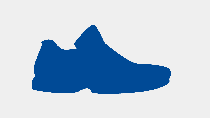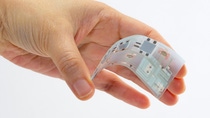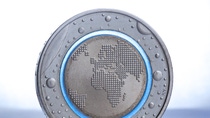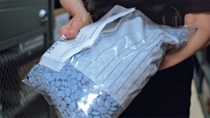Média
Keeping it real
Fake goods are hugely profitable, increasingly sophisticated and often hard to tell apart from the genuine article. The economic impact, brand damage and even potential risk to human health are driving companies to come up with innovative ways to keep one step ahead of the counterfeiters.

“It’s the real thing” may be one of the most famous advertising slogans ever, but how can consumers be sure that the products they buy are genuine, or companies ensure that the parts and materials they use really are what suppliers claim them to be? Whether it is imitation designer goods, or the dangerous trade in counterfeit pharmaceuticals or vehicle parts, fakes are big business. Criminals are drawn by a tempting combination of big profit and small risk. “Almost every consumer item and most industrial components can and have been counterfeited,” says Pottengal Mukundan, Director of the International Chamber of Commerce’s Commercial Crime Services.
Registering rights is key
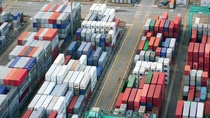
According to the European Union’s law enforcement agency Europol, the most significant enabler for distributing counterfeit goods is the internet. Consumers are attracted by low prices and direct delivery, and some sites are hard to distinguish from those owned by the genuine rights holder. “It’s easier today to close down sites selling or distributing counterfeit products, but on the other hand it’s just as easy to immediately replace them,” says Mukundan, and as it is an activity that transcends national jurisdictions, legal action can be difficult.
To protect their brand, companies should formally register trademarks and designs, stresses Paul Maier, Director of the European Observatory on Infringements of Intellectual Property Rights (IPR) at the European Union Intellectual Property Office (EUIPO). “It’s vital for companies to have rights which they can prove belong to them, through certificates issued by intellectual property offices. For trademarks, registration is a prerequisite to be protected in most jurisdictions, and an essential element of proof for designs.” By registering their rights, companies can also use the EUIPO enforcement database, a secure tool providing direct communication between rights holders, customs and police to fight counterfeiting.
Businesses should also regularly monitor the internet for fake sites or products, and make sure that they are fully up to speed with the legal framework in all the territories where they operate. It helps to make regular test purchases and check on sales networks and distribution channels as a matter of course. “In the process of market monitoring for any IPR infringements, customer feedback and information from business partners have been identified as the most reliable and relevant sources of information on infringements among small businesses notably,” says Maier. Collaboration between public and private sectors on enforcement operations, and knowledge sharing with enforcers are also essential.
Pharmaceutical, crop protection, cosmetics and technical products like car parts and household appliances can all be counterfeited. There are also fake versions of food and beverages. When even the materials used for production can be susceptible, tackling counterfeits is an issue for all kinds of manufacturers.
Smart anti-counterfeiting technologies
In the textile industry, for example, market surveys have revealed that some retail labels misrepresent the percentage and identity of cotton fiber, according to James Hayward, PhD and CEO of U.S. firm Applied DNA Sciences (ADNAS). Customers were not getting the quality they had paid for, so his company developed a clever solution to this problem, using markers based on plant genetic material deoxyribonucleic acid (DNA) to authenticate content. “We think of it as kind of diagnosis and then therapy,” he says. “Our ‘fibertyping’ technology tells us what type of cotton you have in your product, and the therapeutic part is to DNA-mark the fiber during production.” The raw cotton is marked at the cotton gin stage, and followed through the spinning and weaving processes right up to the point when it reaches the retailer or consumer.
The technology is able to withstand extreme temperatures, abrasion and even ultraviolet radiation. It has enabled companies that had difficulties controlling their off-shore supply chains – with products coming back with 20 percent compliance or below – to achieve 100 percent compliance, based on more than 1,000 DNA tests. Furthermore, the amount of DNA required is only one part to a trillion parts of cotton fiber. “It is so miniscule that there’s no impact on any fiber, whether it’s synthetic or natural,” says Hayward.
“There is growing demand for laser marking. The possibilities it offers to tackle counterfeits are almost limitless.”
Steffen Ehrenmann, PhD, Product Manager at TRUMPF
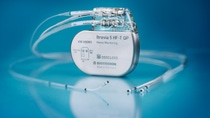
Laser marking is another technology helping companies prove that their products and parts are genuine. TRUMPF, a global high-tech company headquartered in Ditzingen, Germany, produces lasers that can mark many materials quickly and durably, including metals, plastics and organic materials like leather. A mobile phone or hand scanner linked to a database reads the encoded information. The marking itself might be hidden within the product or so tiny as to be almost invisible. Lasers can even mark under the surface or make a local change to the material composition of the top layer.
“There is growing demand for this technology,” says Steffen Ehrenmann, PhD, Product Manager at TRUMPF. “We have customers in automotive, aerospace, medical devices and the food industry, among others. The possibilities it offers to tackle counterfeits are almost limitless.” In China, the impact of counterfeits on the crop protection market is estimated to be between 10 and 15 percent. “A pretty substantial slice,” says Mark Shillingford, BASF’s Head of Marketing Crop Protection in China. What is harder to estimate is damage to crop production, farmers’ yields, their land and, potentially, to human health and product reputation.
Anti-fake labels and invisible tracers
To address this, BASF has developed a color additive labeling process, launched in late 2014. Genuine products feature a watermark that is invisible indoors but displays Chinese characters when exposed to sunlight. Within six months of launching, however, the technology was being copied. “We were already planning for obsolescence,” Shillingford explains. “This year we launched a new counterfeit technology, involving different codes, which we hope will keep us one step ahead of the counterfeiters. This new technology is on the inside and outside of the packages and you need special equipment to read it.”
“Imagine you have a bridge that’s collapsed and you want to trace whose cement it was – you can do that, as well as find out if the company used a sufficient quantity of premium cement in the concrete.”
Lorenzo Ambrosini,
Segment Manager at BASF Construction Chemicals Zurich, Switzerland
Even the cement production industry has attracted counterfeiters. “A producer can open cement bags, take out 10 percent, and put in sand instead, or not use the right amount of cement needed in concrete, for example,” explains Lorenzo Ambrosini, Segment Manager at BASF Construction Chemicals in Zurich, Switzerland.
Cement production is highly complex and, once the product has left the plant, it can be difficult to track. However, BASF has developed a tracer that uses a dispersion of acrylic co-polymer particles dyed with fluorescent material that stick to the cement particles. “The combination of colors means we can create a code for the cement, like a barcode. But it’s hidden, so you need the right equipment to see it,” says Ambrosini. It allows the cement to be measured after years in hardened concrete. “Imagine you have a bridge that’s collapsed and you want to trace whose cement it was – you can do that, as well as find out if the company used a sufficient quantity of premium cement in the concrete,” he says.

The technology for measuring the particles is not yet automated, according to Ambrosini. “It’s still manual work, but one day you’ll be able to take simple equipment to your building site, point it at your concrete wall and scan.” He believes similar labeling technology could also be used for other premium, high-performance products such as paints or cosmetics.
In the world of counterfeits, one thing is sure: Fast-changing technologies and disruptive developments such as 3D printing are likely to mean that the threat will require ever more ingenious responses. Businesses are likely to find that investing in doing all they can to protect themselves, and choosing trustworthy partners, will pay for itself many times over. In the meantime, there’s a very simple rule for all to bear in mind, says Mukundan. “Be wary of products that appear cheaper than they should. There’s usually a reason why they are.”
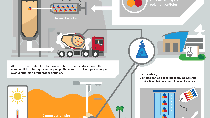
The world’s most counterfeited goods 1
By number of customs seizures. Quantity of product per seizure varies.
Source: Organization for Economic Co-operation and Development (OECD) and European Union Intellectual Property Office (EUIPO)
